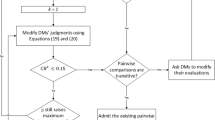Abstract
The Meimeh dam construction is a project, planned to provide sustainable livelihoods, social, and economic developments in the Meimeh River Basin, Ilam, Iran. However, due to the high concentration of TDS in the Meimeh River and its tributaries, river impoundment and water storage can be harmful to the Meimeh Reservoir. The upstream inflow control and the reservoir operation management in a selective withdrawal scheme (SWS) were used to mitigate the potential environmental degradation of Meimeh Reservoir’s low water quality. CE-QUAL-W2 and WEAP (Water Evaluation and Assessment Programming) models were employed to evaluate the effects of various upstream saline inflow control scenarios. The analysis indicated that the diversion of the Siyoul tributary flow rate in the Meimeh River could result in lower violations of Total Dissolved Solids (TDS) concentrations and better water supply satisfaction. Then, the optimal reservoir operation management strategies in a SWS were derived in the best upstream inflow control scenario. The adaptive surrogate-assisted WQSM (water quality simulation model), coupled to hybrid NSGA-II_AMOSA (Non-dominated Sorting Genetic Algorithm-II_Archived Multi-Objective Simulated Annealing) algorithm, has been applied to derive the suitable reservoir operation strategies in SWS, improve the water supply satisfaction and alleviate the adverse effects of reservoir outflow TDS violations. The performances of the best water quality and supply scenarios have been compared with the scenario based on the standard operation policy (SOP) in the Meimeh Reservoir. The results show that most violations of TDS criteria occur during the peak agricultural seasons and significant water deficit in some dry years happens in the SOP.




Similar content being viewed by others
References
Alfarisy GAF, Sihananto AN, Fatyanosa TN, Burhan MS, Mahmudy WF (2017) Hybrid genetic algorithm and simulated annealing for function optimization. J Inform Technol Comput Sci 1(2):82–97
Aygun O, Jonoski A, and Popescu I. 2019. Salinity control on Saigon River downstream of Dautieng Reservoir within multi-objective simulation-optimisation framework for reservoir operation. Computational Science – ICCS. Lecture Notes in Computer Science, vol 11539. Springer, Cham
Castelletti A, Yajima H, Giuliani M, Soncini-Sessa R, Weber E (2014) Planning the optimal operation of a multioutlet water reservoir with water quality and quantity targets. J Water Resour Plan Manag 140(4). https://doi.org/10.1061/(ASCE)WR.1943-5452.0000348
Cole TM, and Wells SA. 2018. User's guide for CE-QUAL-W2: A two-dimensional, laterally averaged, hydrodynamic and water quality model, Version 4.1, US Army Engineering and Research Development Center, Washington, DC.
Deb K (2002) A fast and elitist multiobjective genetic algorithm: NSGA-II. IEEE T Evolut Comp 6(2):182–197
Dortch MS. 1998. Water quality considerations in reservoir management. US Army Engineer waterways, Experiment station, Vicksburg, MS 32-38.
Field RC. 2007. Multi-objective optimization of Folsom Reservoir operation. Dissertation, University of California, Davis.
Hua R, Zhang Y (2017) Assessment of water quality improvements using the hydrodynamic simulation approach in regulated cascade reservoirs: a case study of drinking water sources of Shenzhen, China. Water 9(825). https://doi.org/10.3390/w9110825
Li XG, Wei X (2008) An improved genetic algorithm- simulated annealing hybrid algorithm for the optimization of multiple reservoirs. Water Resour Manag 22:1031–1049
Marin SC, Galelli S, Castelletti A, and Goedbloed A. 2013. Emulation modelling of salinity dynamics to inform real-time control of water quality in a tropical lake. Proceeding of 20th International Congress on Modelling and Simulation, Adelaide, Australia, December 1-6.
MGCE (Mahab-Ghodss Consulting Engineering) 2015a. Integrated Soil and Water Management Studies in Meimeh Riverbasin. Technical Office of Iran Water Resources Management Company, Iran Minstry of Energy.
MGCE (Mahab-Ghodss Consulting Engineering) (2015b) Studies and Modeling on Water Resources Planning and Management. Technical Office of Iran Water Resources Management Company, Iran Minstry of Energy
Minhas PS, Dubey SK, Sharma DR (2007) Comparative effects of blending, intera/inter-seasonal cyclic uses of alkali and good quality waters on soil properties and yields of paddy and wheat. Agr Water Manage 7:83–90
Nkwonta OI, Dzwairo B, Otieno FAO, Adeyemo JA (2017) A review on water resources yield model. S Afr J Chem Eng 23:107–115
Reda A, Riad PHS, Gammal HAE, El-Razik MHA, Nour-El-Deen MM, Khalifa AAM. 2015. Water quality management information system upstream Cairo drinking water plants. Dan J Eng Appl: 14-29
Saadatpour M, Afshar A, Edinger JE (2017) Meta-model assisted 2D hydrodynamic and thermal simulation model (CE-QUAL-W2) in deriving optimal reservoir operational strategy in selective withdrawal scheme. Water Resour Manag 31:2729–2744
Saadatpour M, Afshar A, Khoshkam H (2019) Multi-objective multi-pollutant waste load allocation model for rivers using coupled archived simulated annealing algorithm with QUAL2Kw. J Hydroinform. https://doi.org/10.2166/hydro2019056
Shaw AR, Sawyer HS, LeBoeuf EJ, McDonald MP, Hadjerioua B (2017) Hydropower optimization using artificial neural network surrogate models of a high-fidelity hydrodynamics and water quality model. Water Resour Res 53. https://doi.org/10.1002/2017WR021039
Soleimani S, Bozorghaddad O, Saadatpour M, Loáiciga H (2016) Optimal selective withdrawal rules using a coupled data mining model and genetic algorithm. J Water Resour Plan Manag. https://doi.org/10.1061/(ASCE)WR1943-54520000717
Xu P, Sui S, Du Z (2015) Application of hybrid genetic algorithm based on simulated annealing in function optimization. World Academy of Science. Engineering and Technology Int J Math Comput Sci 9(11):695–698
Yates D, Sieber J, Purkey D, Huber-Lee A (2005) WEAP21-A demand, priority, and preference driven water planning model - part 1: model characteristics. Water Int 30:487–500
Yu Y, Wanga P, Wang C, Wang X (2018) Optimal reservoir operation using multi-objective evolutionary algorithms for potential estuarine eutrophication control. J Environ Manag 223:758–770
Yusoff Y, Ngadiman MS, Zarin AM (2011) Overview of NSGA-II for optimizing machining process parameters. Procedia Engineer 15:3978–3983
Author information
Authors and Affiliations
Corresponding author
Ethics declarations
Conflict of Interest
None.
Additional information
Publisher’s Note
Springer Nature remains neutral with regard to jurisdictional claims in published maps and institutional affiliations.
Rights and permissions
About this article
Cite this article
Saadatpour, M. An Adaptive Surrogate Assisted CE-QUAL-W2 Model Embedded in Hybrid NSGA-II_ AMOSA Algorithm for Reservoir Water Quality and Quantity Management. Water Resour Manage 34, 1437–1451 (2020). https://doi.org/10.1007/s11269-020-02510-x
Received:
Accepted:
Published:
Issue Date:
DOI: https://doi.org/10.1007/s11269-020-02510-x




